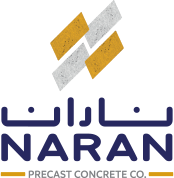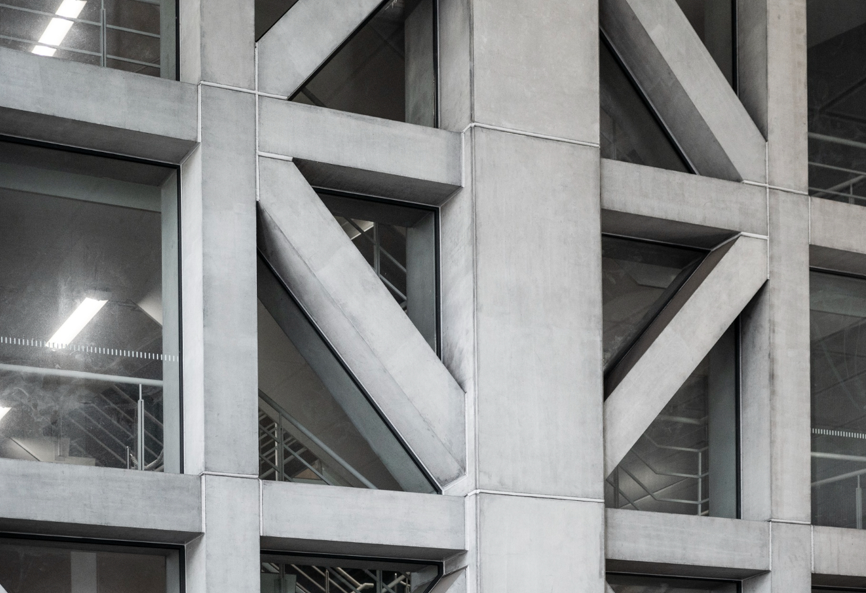Precast concrete has revolutionized the construction and urban development sectors. Unlike traditional concrete that was poured on site, precast concrete products are first designed and prepared in factories and then transferred and installed at the construction site.
The use of precast concrete reduces labor costs, eliminates risks, and reduces project timelines. Precast concrete is a more practical, durable, and cost-effective option, which is why most modern projects are employing it instead of on-site concrete pouring.
This article looks into some common precast concrete structures, their costs, and the benefits. So, keep on reading till the end to learn more.
- How Precast Concrete Products Are Made: A Brief Overview
- Factors That Affect the Cost of Precast Concrete
- Costs of Different Precast Concrete Structures
- Benefits of Precast Concrete
How Precast Concrete Products Are Made: A Brief Overview
Before we look into the benefits and average costs of precast concrete for infrastructure development, let’s first briefly look at how it is made. The following are some key steps involved in the process.
Step 1: In the first step, detailed shop designs and engineering designs of the precast concrete structures are created that contain information about their dimensions, inserts, finishes, and required connections.
Step 2: Then, steel, fiberglass, or wood-based reusable molds are cleaned and prepared using release agents.
Step 3: In this step, steel rebars are placed inside the molds, and required embedded components like conduits or connection plates are fixed in place.
Step 4: After that, uniformly mixed concrete is poured into the mold, and vibrators are used to make sure there are no air pockets in the final product.
Step 5: Then, concrete is allowed to set under controlled temperatures. Steaming curing may also be used if the project timelines are strict. Curing usually completes in 12-24 hours, depending on element type and strength needs.
Step 6: Now, you can remove the concrete molds and clean them with care. The surface smoothness, dimensional accuracy, and strength are also tested in this step.
Step 7: The concrete element is now ready for cleaning, polishing, and texturing.
Step 7: Finally, the finished products are stored in a staging yard while ensuring proper support after labeling.
Factors That Affect the Cost of Precast Concrete
The following are some key factors that affect the costs of precast elements such as precast concrete manholes, manhole covers, beams, columns, panels, etc.
- The shape and dimensions of the precast concrete element affect the total price.
- The weight of the precast concrete element also affects its price.
- The costs may be higher for precast concrete elements that come with stamping, panelling, plastering, or customized finishes than standard slabs.
- The complexity of the design of the element significantly affects its cost.
- The curing method used also influences the price of the precast concrete products.
- Storage, handling, and installation complexity can also add to the overall costs of precast concrete elements.
Costs of Different Precast Concrete Structures
As you have seen just now, there are many factors that influence how much different precast architectural structures cost. Typically, you have to pay about $150-$320 per linear foot for a precast concrete piece that is about 6” to 8” in length.
The cost of precast concrete per cubic yard is about $360-$1200. Precast concrete structures can be manufactured in a variety of shapes, and the following sections cover a few main ones along with their prices.
- Precast Concrete Wall Panels
These are large rectangular panels that are used for the interior or exterior walls in warehouses, data centers, and commercial buildings. A solid precast wall panel can cost you about $20 – $40 per square foot, while insulated sandwich panels cost you about $25 – $50 per square foot.
- Precast Concrete Beams and Girders
These beams and girders are used to provide structural support to buildings, bridges, parking structures, and industrial roofs. Standard precast beams are typically $80 – $120 per linear foot.
The cost of precast bridge girders is between $150 – $300 per linear foot.
- Precast Concrete Columns
Precast concrete columns are mainly used in industrial sheds or multi-story buildings. A standard column costs you about $100 – $250 per linear foot, while a custom/architectural column costs $150 – $300 per linear foot.
- Precast Concrete Stairs
Precast concrete stairs come with pre-installed treads and risers that are used in parking garages, multi-story commercial or residential buildings, schools, etc.
The cost of a standard straight flight of stairs is about $1,500 – $3,000 per flight.
- Precast Foundation Elements
These elements are installed either in construction projects where speed is your top priority or in cases when the soil conditions are difficult or unsuitable for normal foundations.
The cost of precast footings or pile caps is about $200 – $500+ per piece. Precast piles can cost you somewhere between $40 – $80 per linear foot.
Benefits of Precast Concrete
There are many benefits of using precast concrete for commercial or residential building construction. This section covers a few of these to give you a general idea.
- The use of precast concrete significantly reduces construction delays and saves you plenty of time.
- The concrete casting and site preparation can be done at the same time, which enhances efficiency.
- The smooth finishes and high impact resistance of precast concrete elements give them a much longer life.
- The precast concrete structures are made in controlled factory environments where strict quality control standards are used before the concrete elements leave for the site.
- The installation can be done irrespective of the weather, which is not possible with on-site concrete pouring.
- Precast concrete elements are fireproof, moisture-resistant, and very durable in general.
Conclusion
Every construction project needs high-quality construction material that offers both durability and attractive aesthetics. Precast concrete has changed the construction sector for the better with its greater flexibility, design freedom, risk-free and quick installation, and longer life.
The cost of precast concrete elements varies based on their complexity, amount of material used, curing method, shapes, and sizes.
Just make sure to notify the manufacturer about your specific project requirements to make sure you get precast concrete elements that deliver the best results in terms of aesthetics, functionality, and durability.
You can visit us at Naran Precast Concrete Co. to get the best quality precast building construction solutions and products at very reasonable prices.

